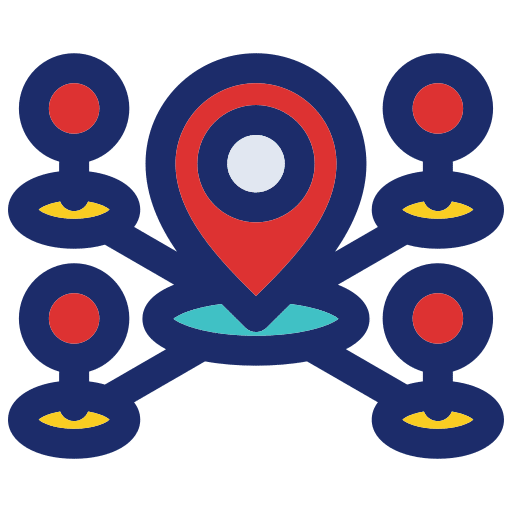Search engines, especially Google, prioritize user experience and relevance in their ranking systems. By focusing on the user and building a reputation as a credible source of information on a specific topic, brands can significantly improve organic performance.
Building a reputation around a specific topic or subject area, with a focus on the audience, is critical to organic visibility. Topic tours, as an integrated SEO and PR strategy, are pivotal for increasing organic ranking and visibility.
Google Search Liaison Danny Sullivan wrote on X (Twitter).
“Google’s long-standing advice of “Don’t do things for Google” is counter-intuitive to anyone who is trying to be successful with Google.”
Guiding SEOs to focus on the audience.
A topic tour improves the site’s reputation with the target audience and search engines as a consequence.
Topic tours rank sites and drive relevant traffic.
Definition

A “PR Topic Tour” is an integrated PR & SEO strategy that aligns on-page and off-page content around a series of interconnected topics positioned throughout the buying journey. This approach strategically boosts brand visibility, establishes thought leadership, and improves search engine rankings by establishing a site or entity’s reputation around a specific topic.
The Case of the “Influence Map”
The idea of an “influence map” is a marketing framework created by Rand Fishkin, Co-founder of Sparktoro, Moz, and author of Lost & Founder.
In 2021, Fishkin wrote an article called Influence Maps—The Best Marketing Framework You’ve Never Heard Of, which is the first time I’ve heard of the concept.
Accompanying this article, Fishkin created this Whimsical template as a tool for readers to use when executing the framework.
This article ranks for keywords like “marketing influence map” or “Sparktoro influence map.” This makes the content accessible for marketers to find, creating a funnel to Sparktoro from other media.
With foundational content in place, Fishkin started to cover the topic on podcasts, webinars and social. Here’s just a sample:
- Webinar on Crowd Content, about content marketing included the influence map.
- Twitter posts about “What is an influence map”
- The Ungagged Conversations podcast about SEO
- The Marketing Plan Podcast is a talk about digital marketing.
The framework gained some momentum with mentions of the concept and links to the article organically developing.
According to Semrush, the page received links from Substack, Typeform, Search Engine Land, Prezly and more. As of today, the article has 44 unique referring domains linking and talking about the framework.
Additionally, the Google Keyword Planner says “influence maps” has over 720 searches a month–note that the concept of “influence maps” has grown to mean other things which increases this search some.
The influence map campaign is a solid example of how a topic tour can create an SEO PR funnel and organic visibility with reputation, links and brand mentions for a business.
Key Principles
Integrated Approach: Integrate digital PR and SEO to create consistent touchpoints for the target audience around a single topic. This consistency with topics both on and off-page helps the audience and search engines understand the site’s expertise in a given topic.
Customer Journey Focus: Understanding the path that potential customers take from awareness to decision-making and the impact that media, search engines, and the site have on them. Media, search engines, and on-page content are tailored to meet the customer’s needs at each stage of this journey.
Topical Expertise: Selecting topics closely related to the company’s expertise and the audience’s interests. The search engine and audience need to understand a site’s reputation around a given topic to trust it.
I wrote this article for Search Engine Journal that explains how to identify an individual and company’s area of expertise.
Data-Driven & Transformative Content: Leverages unique research and insights to create content that informs, educates, and transforms the audience’s understanding or behavior.
SEO PR Funnels: SEO PR funnels an audience through search engines by using media coverage to spark interest, leading people to search for the brand or related topics in search engines and end up on a website.
Influence action: Others have to talk about and share the topics and your ideas around them. Journalists, customers, followers, and content creators have the potential to share and champion your ideas. This engagement creates proof of the individual or company’s expertise and reputation in a given topic.
How it works
Identify the Customer Journey: Understand the different stages a customer goes through before making a purchase or taking a desired action. This involves figuring out what information they need at each stage, such as discovering a product, learning how to use it, and making a decision to buy.
Select Relevant Topics: Based on the customer journey, pick topics that are relevant to both the company and the customers. These topics should be something that your company can offer unique insights on or has authority in.
Determine Content Types and Platforms: Decide on the best format and platform for each topic, considering where your audience is most likely to engage with it. This could be on your company website, through podcasts, press releases, blogs, or other media outlets.
Integrated Topic Funnel: The goal is to guide potential customers from media starting points (media articles, search engine results, etc.) to search engines and finally to a company’s website. This funnel is crafted using:
- Branded funnels: Drive demand and interest for branded terms specific to your company or products.
- Non-brand funnels: General terms related to your company, product/services or expertise that a site ranking for on search engines.
- Branded research reports: In-depth reports or studies your company produces, offering valuable insights (e.g., “PureLinq’s State of SEO 2024” report).
- Concepts Funnels: Ideas or methodologies unique to your company (e.g., the “Topic Tours” concept itself) that a company owns but is also interesting to an audience.
The essence of the topic tour tactic is to systematically discuss and link the topic across different platforms and formats to attract and guide potential customers through their journey, from initial awareness of the concept to the decision to search concept, and potentially buy the product, using targeted topics and keywords.
This not only helps in improving your site’s visibility on search engines but also establishes your company as an authority in your field, attracting more traffic and potentially converting customers.
A topic tour can be used with the owned asset marketing (OAM) strategy to build highly contextual links and brand mentions around a specific topic, building your topical authority and trust.




